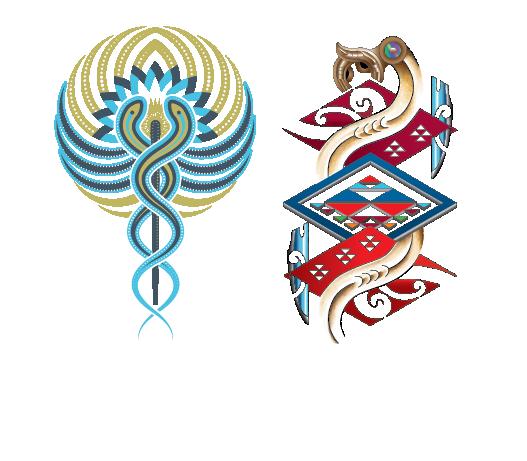
7 minute read
New framework to increase access to surgery for bariatric patients
New framework to increase access to surgery for bariatric patients
With almost 12.5 million Australians suffering from obesity, the medical consequences of this disease have created a serious challenge for the Australian healthcare system.
Advertisement
Mr Ahmad Aly
While exercise and medication can be effective methods of weight loss for some patients, it is rare for these non-surgical procedures to have a long-lasting effect in cases of morbid obesity. By contrast, bariatric surgery has proven to be an effective treatment that generates substantial weight loss and can be sustained over the medium to long term. Bariatric surgery also has a demonstrable track record of reversing or mitigating obesity-related health risks and complications, particularly diabetes. But approximately 90 per cent of the 24,000 bariatric procedures in Australia have been conducted by the private hospital sector. According to National Bariatric Registry data from 2019, only 22 public hospitals have conducted bariatric surgical procedures, with 10 performing more than 75 procedures annually. A recent survey from the Australian and New Zealand Metabolic and Obesity Surgery Society (ANZMOSS) suggested only 15 hospitals have a structured elective bariatric surgery program. Because obesity is a disease that is more common among less affluent people in the community, limited access to bariatric surgery through the public hospital system has generated a serious problem of healthcare inequity. Mr Ahmad Aly, Head of Upper Gastrointestinal Surgery at Melbourne’s Austin Hospital, is leading an initiative to redress the socio-economic inequity of access to bariatric surgery. Three years ago, surgeons from ANZMOSS and several collaborating bodies, including the Commonwealth Government’s Medical Services Advisory Committee (MSAC), formed a joint taskforce to address the problem. The taskforce discovered that only four per cent of total bariatric surgical procedures were “completely publicly funded”, Mr Aly said. He noted that the current system has evolved around the implicit expectation that patients would have private health insurance, or would otherwise be able to self-pay for their surgery. He added there was a worrying trend over recent years for patients to use their superannuation or life-savings to pay for their surgery. “We were concerned about this inequity of access,” he said. “It is for us, to some degree, a social justice issue.” As a result, the taskforce focused on more effective means of “delivering what is well-proven life-saving care to patients who simply can’t access it at the moment”. Composed of medical professionals, health administrators, government officials and representatives from obesity clinic stakeholder groups, the taskforce produced the Public Bariatric Surgery Framework. Published in October 2020, it is a roadmap to remediate the burgeoning public health and social equity problem. The Framework recommends the adoption a new set of eligibility criteria called the Edmonton Staging System for Obesity. This staging system focuses on mortality as an outcome, which does a more accurate job of anticipating patient prognoses than reliance on mere BMI alone. On this basis, “we can say with confidence that if we treat patients at a particular stage of obesity, we’ll be saving lives”, Mr Aly said. Mr Aly noted that a long-running study of obesity in Sweden has demonstrated the tangible benefits of this approach. Out of 4047 obese Swedish patients who enrolled in the study, 2010 received bariatric surgery while a control group of 2037 received conventional non-surgical treatment. Those who underwent surgery enjoyed “a 38 per cent reduction in cancer deaths and a 32 per cent reduction in cardiovascular death”, he said.
But patients’ direct involvement in their weight-reduction treatment doesn’t end when they leave the operating theatre. In order to enjoy the long-term benefits of bariatric surgery, patients must modify their post-operative lifestyles in terms of diet and exercise.
“It’s all about the patient’s willingness and dedication,” explained Mr Aly. “We want to know that the patient is invested in the program.” This is why the framework also recommends “preoperative engagement processes that give patients the opportunity to be certain that it is right for them”. This initiative to broaden access to bariatric surgery is also fiscally sustainable, Mr Aly pointed out, because out of 1.5 million obese Australians, “it’s likely that only two or, at most, three per cent of patients would actually seek it”. Commonwealth Treasury officials have also recognised the fiscal logic of increasing access to bariatric surgery to moderate aggregate healthcare costs generated by medical conditions associated with obesity. “It’s not going to happen overnight,” Mr Aly said. “But we’re accumulating the tools that generate enough goodwill to get this done.”
RACS and First Australians – the Indigenous Surgical Pathway Program
For many decades the Royal Australasian College of Surgeons (RACS) members have demonstrated a desire to contribute to improving the general health and wellbeing of First Australians. In recent years, our College has formalised its ongoing commitment to Indigenous health. This has included a multifaceted approach to First Nation health encompassing areas such as increasing the surgical workforce, awareness by the Fellowship of the disparity between Indigenous and non-Indigenous health, and using our leadership position for positive influence, all starting from within the College. RACS is among the leading Australian institutions in this field, contributing to solution-driven policies and actions that impact First Australians. One significant example of this commitment is expressed in the RACS 2013 Indigenous Health position paper, which recognises that Indigenous people are more likely to present for, and comply with, treatment guidelines if increased numbers of Indigenous people were represented in the medical workforce at all levels of care. According to 2016 Australian Bureau of Statistics data, there are approximately 800,000 First Australians. To achieve the same ratio of doctors to patients as nonIndigenous Australians there need to be 3200 First Australian registered doctors. According to available data, there are approximately 400 First Australian registered doctors. There are currently almost 7000 active RACS Fellows, Trainees and SIMGs. This translates to roughly 3500 patients per surgeon in Australia. If applying the same ‘population per surgeon’ formula to First Australians, we should have 219 First Australian surgeons. Currently, we have three. This (rather simplified) demographic breakdown helps puts into perspective the unique circumstances and challenges faced by the Indigenous Health Committee (IHC) when implementing the RACS 2013 Indigenous Health position paper to help rectify this inequity. Converting policy into action, and then ensuring such action produces the desired outcome is challenging at the best of times.
There are so many international achievements from a minority population of 800,000 within a world population of 8 billion (such as CNN anchor Stan Grant and Captain Reginald Saunders, recipient of a United States Presidential citation) despite historical government policies relegating First Australians to the fringe of mainstream Australian society. In fact, the only impediment to more success is the power differential created by racism, limiting their ability to reach critical mass in the number of doctors and surgeons. The Indigenous Surgeons Pathway Program (ISPP) is a long-term, multipronged initiative that recognises the need to support those wishing to contribute to health equity for First Australians. The solution is, in part, changing the culture within our institution to honour the rights and value the amazing contributions First Australians have to offer.
Our goals are to inspire First Australians (school students, medical students, those in other health careers) to consider a career in surgery. To support them through preparation for, application to and completion of Surgical Education and Training (SET); develop a mentor program to support RACS Fellows who wish to support the program; coordinate and facilitate collaboration between stakeholders; and support our current SET Trainees. The pilot project for the ISPP is being led by the Royal Darwin Hospital. Health service, departmental and mentorship standards will be defined and, ultimately, a package will be developed to be introduced and applied Australia-wide. The challenges faced by the ISPP working group can be unique and often multigenerational, requiring unique and multigenerational solutions. Underpinning the ISPP is the preparedness to adopt a First Australian holistic approach to wellbeing and health, and draw on the commitment of RACS Fellows and RACS administrative staff, as well as upon First Australian community values. Moreover, an appreciation of Australian Government policy history, and an understanding of First Australian community values and the unique circumstances impacting upon First Australians is needed. We look forward to the collective support and contribution from RACS, as a whole, and hope to be able to demonstrate our ongoing leadership, innovation and professionalism when contributing to Australia’s wellbeing as a complete community. The ISPP is partly funded by the Australian Government Department of Health through the Specialist Training Program (STP). The ISPP will be officially launched later in the year. If you would like to know more about RACS Indigenous health initiatives visit surgeons.org/aboutracs/indigenous-health.
Aboriginal & Torres Strait Islander surgeons: demonstrating community values through inclusion, leadership and professionalism

Can you make the cut?










